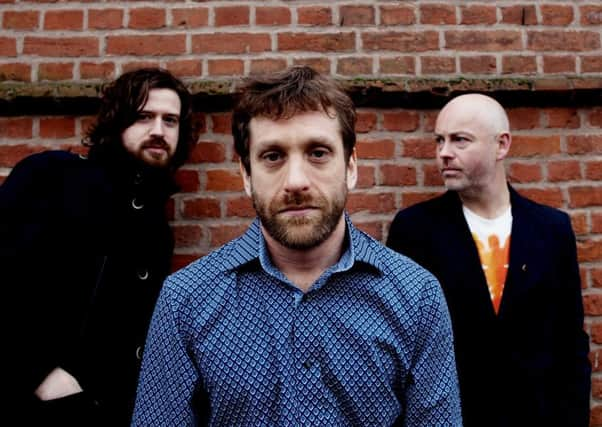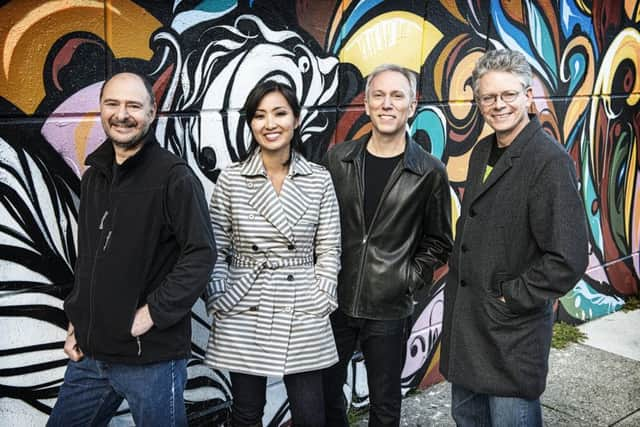A new instrument, the Kronoscillator, that stretches musical possibilities


It’s not every day that a composer gets the opportunity to combine a major commission with the invention of a new musical instrument. It happened to Martin Green, however, accordionist and electronic dabbler with the experimental Scots-based folk group Lau, when the world-famous Kronos String Quartet took a keen interest in what he was doing.
It’s all to do with a mutual love of sound, says Green, whose previous exploratory work with Lau, particularly the spectral timbres of Crows Bones, written for Opera North, brought his creative ingenuity and fertile imagination to the attention of the famously avant-garde, California-based Kronos.
Advertisement
Hide AdAdvertisement
Hide AdThe result is the Kronoscillator, which looks like a couple of Slinkys with pick-ups attached, but sounds weirdly original. “That’s essentially what it is,” he says. “I was watching this guy demonstrating points of a wave on the internet, and I thought wouldn’t it be great if you could actually see right into a standing wave? Even better if you could hear it as well.”


He shared his thoughts with David Harrington, Kronos’ open-minded first violin, and they both got very enthusiastic about the idea. “David has a real love of sound. He’s also one of the most energetic and enthusiastic people I’ve ever met,” says Green. “He spends his life devouring music of all sorts. He saw Crows Bones and approached me about doing something for Kronos.”
The result is Seiche – “a standing wave” – which Kronos is premiering on its current UK Tour alongside Terry Riley’s One Earth, One People, One Love, works by Laurie Anderson, Komitas and the Who, and UK premieres from the ensemble’s Fifty for the Future project. Their one Scottish appearance is at the Usher Hall on Wednesday.
Green’s invention started life as a raid on his kids’ toy box. “When you stretch a Slinky out you can really see what a wave looks like. We had some lying around the house, and I started off trying to make a jumbo-sized spring reverb out of them, but it wasn’t particularly successful,” he explains. “I eventually found a way of getting pitch out of them using tuning forks.”
The end result is a contraption involving two Slinkys stretched out in triangles that meet either side of the quartet. One is played by the first violinist, the other by the cellist. “I didn’t steal them from my kids, by the way; I bought new ones.”


Green is no stranger to writing for string quartet. Lau’s previous collaborations with the Elysian Quartet incorporated significant elements of improvisation, which Green says emerged from a growing familiarity with their style, both in performance and “because a lot of their improvisations are up on Soundcloud, making it easy to reference things.”
“It was hard to guess with Kronos, because I had only seen them play live, so maybe I didn’t feel brave enough to leave them so free.” So how would he describe the music language of Seiche?
Advertisement
Hide AdAdvertisement
Hide Ad“A love of tune goes into everything I do,” he says. “I spend a lot of time in that melody-focssed world, where the idea is to continually create a longer expanded form of a tune, deciding where it remains prominent, what to do with the other players, how to prop it up and give backing. I’ve looked at the relationship here between the quartet and the Kronoscillator in much the same way.”
And will he take anything of the Kronos experience back to Lau? “Loads, to be honest,” he reckons. “We’ve always gone and done other things individually and it always feeds back into the group. Some of it is musical, but the social experience is important too: just going in and hanging out with another band, seeing how they operate, how they get stuff done, how they get on with each other after 40 years.”
And the Kronoscillator? “It’s there if somebody wants it,” he says. “I would delve back into Slinkys myself. There’s something beautiful about them, more music to be discovered.”
• Martin Green’s Seiche is performed by the Kronos Quartet at the Usher Hall, Edinburgh on 18 May, www.usherhall.co.uk